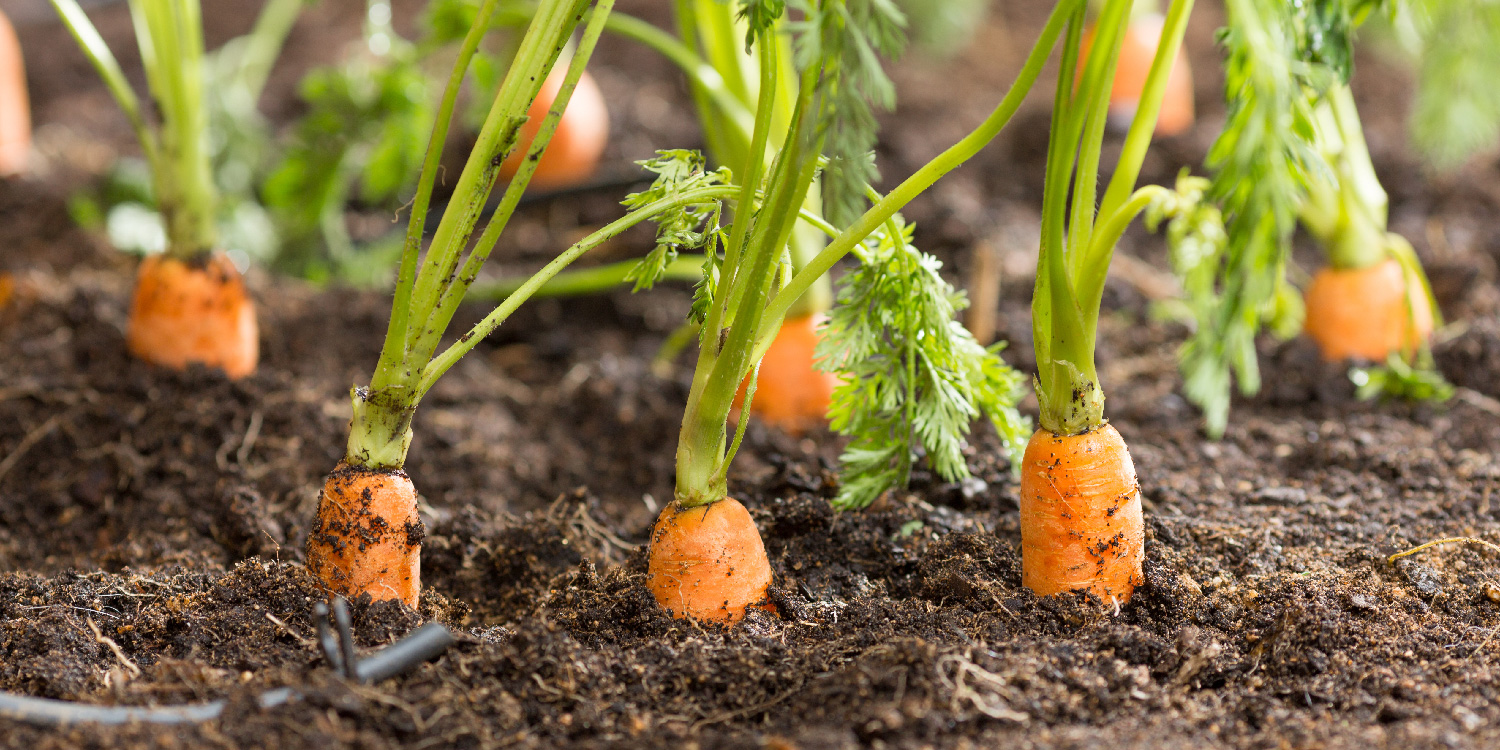Effective weed management is crucial in carrot cultivation to minimise weed competition, optimise crop growth and yield, and ensure the overall health and quality of carrot plants. Weeds compete for nutrients, water, and sunlight, leading to reduced carrot growth and lower yields. This eventually causes significant losses especially if the weeds are not controlled. Implementing proper weed control strategies is essential to maintain the productivity and profitability of carrot crops.
Carrot crop is a poor competitor with weeds, and if not controlled, yields can be reduced by more than 90%, because the weeds in a carrot crop can quickly overtake the crop.
Common weeds in carrots
These include both broadleaf and grass weeds.
| Broadleaf weeds | Grass weeds |
| · Blackjack (Bidens pilosa) | · Barnyard grass (Echinochloa crusgalli) |
| · Wild gooseberry (Physalis angulata) | · Carrot seed grass (Tragus racemosus) |
| · Small flowered quickweed (Galinsoga parviflora ) | · Goose grass (Eleusine indica) |
| · Mexican marigold (Tagetes minuta) | · Sweet buffalo grass (Panicum schinzii) |
| · Devil’s thorn (Emex australis) | · Annua blue grass (Poa annua) |
| · Pigweed (Amaranthus spp) | · Red bristle grass (Setaria spp) |
| · Oxalis (Oxalis spp) | · Guinea grass (Panicum spp) |
Importance of Weed Control
Control of weeds is extremely important in several aspects. These include;
- Since weeds directly compete with carrots for nutrients, space, and water, they reduce the size of carrot roots and thus reduce overall yield.
- They also cause carrot roots to be deformed and therefore unmarketable.
- Weeds that present late in the season may also cause severe harvesting problems.
- They harbor pests and diseases.
- Some are parasitic while others are harmful when eaten.
- Some weeds can damage the crop by producing toxic substance
Benefits of Early/Timely Weed Control
Weed control is critical early in the season because;
- It allows for the formation of good, straight roots
- Young weeds are easier to control, e.g., they absorb and trans-locate herbicides better
- It helps in protecting the yield potential of the crop
- Weeding can be less effective in times of drought stress, which mostly occurs at later dates of the season
Control Methods
Considering the yield losses attributed to weed infestation in carrot fields, timely weed control is important.
There are two separate periods in the life cycle of the carrot crop when weed control is very important. These are
- Early crop season –this is the Critical Weed-free Period. During this period, weeds are controlled in order to protect yield.
- Late crop season – this is during the harvest period. Weeding should be done in order to facilitate crop harvestability and future production.
There are several ways through which weeding in carrots can be done. These include the following;
Chemical Control
This method involves the use of herbicides, and is mostly preferred because;
- It is fast and easy
- There is no mechanical damage to the crop.
- It is cost effective
The following herbicides are recommended for use in controlling weeds in a carrot garden for high yield production:
- CATAPULT 480 SL
Is a non-selective Post emergence herbicide which controls Annual and perennial grasses and broad leaved weeds. Use CATAPULT 480 SL during Carrot Land Preparation to clear all weeds.
Rate of Use: 2.0Litres per Hectare (250ml in 20L) - WEMBE 200 SL
Is a non-selective Post emergence herbicide which controls Annual and perennial grasses and broad leaved weeds. Use WEMBE 200 SL during Carrot Land Preparation to clear all weeds including more resilient or challenging weeds.
Rate of use: 3.0Litres per Hectare (300ml in 20L) - HOTLINE 450 SC
Is non-selective Pre emergence herbicide on Carrot to control Annual grasses and broad leaved weeds. Should be applied immediately after sowing but before it emerge, also should be applied when soil is well moistened.
Rate of Use: 1.0 Litres per Hectare (50ml in 20 L)
Mechanical methods
This involves the use of tools and equipment like jembes, hoes, pangas, ploughs, among others, in weed control. It should be done carefully in order to prevent mechanical damages to the crop.






